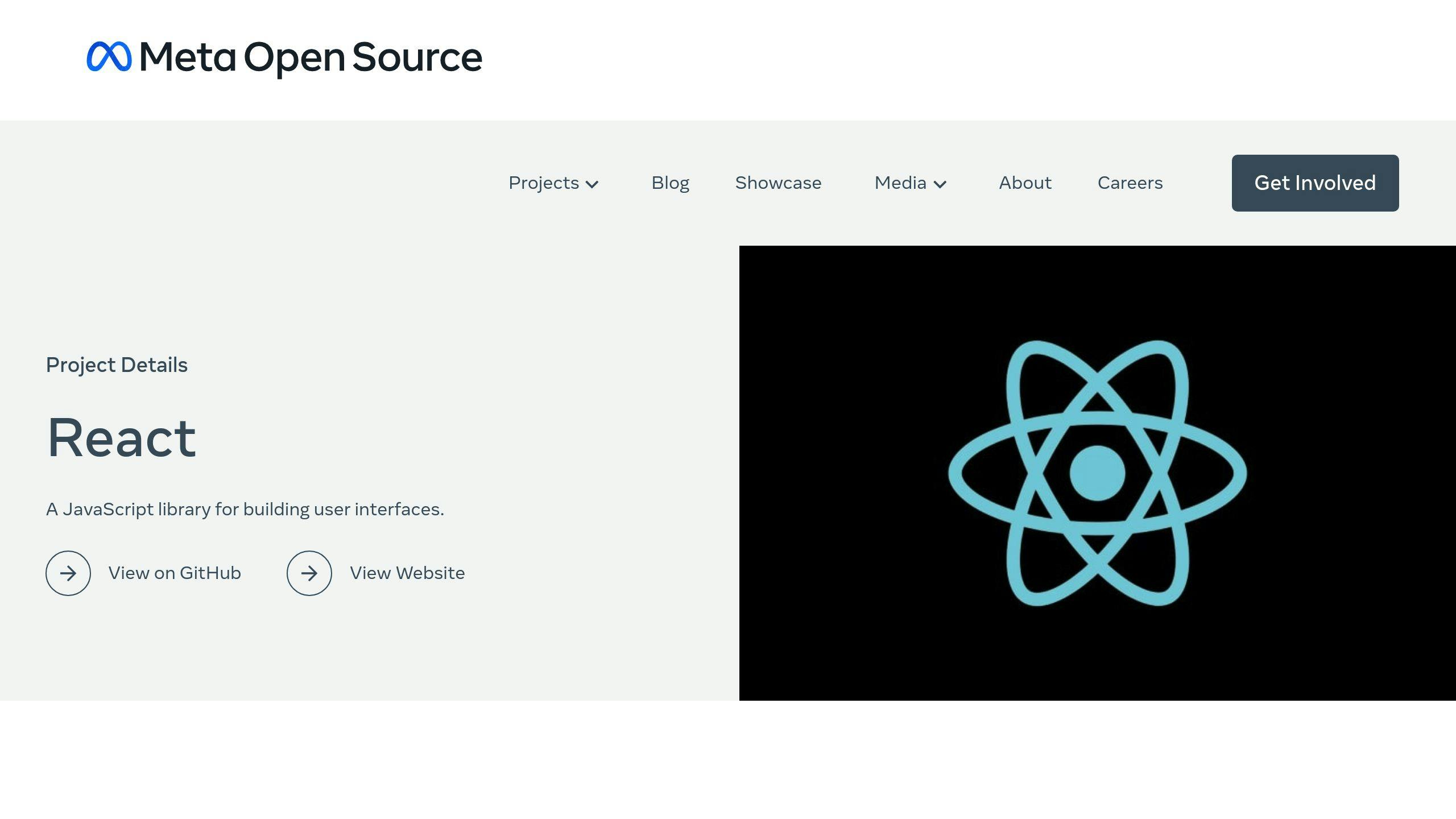Yes, React and Node.js are commonly included in full stack developer courses. These technologies are essential for building modern web applications, with React focusing on front-end user interfaces and Node.js handling back-end server logic. Together, they form the backbone of many full stack projects, including popular stacks like MERN (MongoDB, Express, React, Node.js).
Key Highlights:
- React (Front-End): Used for creating dynamic, component-based user interfaces with features like the Virtual DOM and one-way data flow.
- Node.js (Back-End): Enables efficient server-side development with non-blocking I/O and event-driven architecture.
- Practical Learning: Courses emphasize hands-on projects, teaching REST API creation, state management, and deployment strategies.
- Career Impact: Proficiency in these tools opens up high-paying roles like Full Stack Developer, with average salaries ranging from $100,000 to $150,000.
React and Node.js are integral to full stack development education, preparing learners for in-demand roles in web development.
Full Stack Development Basics and Components
Defining Full Stack Development
Full stack development covers both the client-side and server-side of applications, including user interfaces, server logic, and databases. Developers manage the entire stack, ensuring smooth integration between all layers.
Here’s a breakdown of the three main layers:
| Layer | Components | Primary Functions |
|---|---|---|
| Presentation Layer | HTML, CSS, JavaScript | Handles the user interface and client-side logic |
| Application Layer | Server-side code, APIs | Manages business logic and data processing |
| Data Layer | Databases, Storage | Focuses on storing and retrieving data |
This structure ensures that all parts of the application work together efficiently. Now, let’s look at the technologies that power full stack development.
Technologies Used in Full Stack Development
Modern full stack development relies on a variety of tools and frameworks to create functional and scalable web applications. Here’s an overview of the key technologies:
| Category | Essential Technologies | Purpose |
|---|---|---|
| Front-end | HTML, CSS, JavaScript Frameworks | Crafting responsive and interactive user interfaces |
| Front-end Frameworks | React, Angular, Vue.js | Building dynamic, feature-rich web applications |
| Back-end | Node.js, Express.js | Developing server-side application logic |
| Databases | MongoDB, PostgreSQL | Managing and storing data |
| Version Control | Git | Tracking code changes and enabling team collaboration |
| Development Tools | Deployment Tools, Version Control | Simplifying deployment and ongoing maintenance |
React and Node.js are particularly popular choices for creating scalable and efficient applications [2][4].
When integrating these technologies, developers need to prioritize data consistency and security. For example, while building RESTful APIs using Node.js and Express.js, it’s crucial to ensure secure communication between React-based front-end components and back-end services [2][3]. This careful integration is key to delivering a seamless user experience.
MERN Stack Tutorial with Deployment – Beginner’s Course
Role of React and Node.js in Full Stack Development

React and Node.js have become essential tools in the world of full stack development, offering powerful solutions for both front-end and back-end needs.
React for Front-End Development
React’s design revolves around breaking down user interfaces into components. This structure, paired with its Virtual DOM, allows developers to build responsive and efficient applications. By reusing components, developers can save time and streamline the development process.
| Feature | Advantage | Effect on Development |
|---|---|---|
| Component-Based Design | Reusable UI components | Speeds up development |
| Virtual DOM | Faster rendering | Boosts app performance |
| One-Way Data Flow | Reduces potential errors | Simplifies debugging |
| Declarative Syntax | Clear, predictable code | Easier maintenance |
These features make React a go-to choice for creating dynamic, high-performing single-page applications (SPAs). While React focuses on the user interface, Node.js ensures the back-end can keep up with the demands of modern applications.
Node.js for Back-End Development
Node.js is built for efficiency. Its event-driven, non-blocking design makes it perfect for handling multiple requests simultaneously, which is crucial for real-time applications and scalable back-end systems. This architecture ensures smooth performance, even under heavy loads [2][4].
| Capability | Use Case | Benefit |
|---|---|---|
| Event-Driven System | Real-time apps | Enhances user experience |
| Non-Blocking I/O | High-concurrency handling | Improves scalability |
| NPM & JavaScript Base | Unified development | Speeds up workflows |
Node.js also simplifies development by allowing developers to use JavaScript on both the front-end and back-end, fostering a more cohesive workflow.
React and Node.js Working Together
Combining React and Node.js creates a seamless full-stack environment. This synergy is particularly effective for SPAs, where React handles the client-side interface while Node.js manages server-side logic [2][3].
The MERN stack (MongoDB, Express, React, Node.js) is a prime example of this collaboration. With JavaScript at its core, the stack unifies front-end and back-end development, reducing complexity and accelerating project timelines [2][4]. Together, React and Node.js empower developers to build scalable, responsive, and efficient web applications.
sbb-itb-f454395
Inclusion of React and Node.js in Full Stack Courses
Top educational platforms now make React and Node.js key parts of their full stack development programs. These technologies have become essential for modern developer training, reflecting their growing demand in the industry.
Courses Featuring React and Node.js
Many platforms focus on teaching React and Node.js through practical, project-based learning. For instance:
- Scaler includes modules on React and Node.js, emphasizing real-world projects to help students master these tools [1].
- KodNest uses an AI-driven learning platform to combine React and Node.js training with hands-on projects and mentorship.
- Full Stack Open takes a university-backed approach, focusing on building single-page applications (SPAs) with React and Node.js backend services.
| Platform | Course Features | Technologies Covered |
|---|---|---|
| Scaler | Industry-focused modules, Project work | React, Node.js, Express.js |
| KodNest | AI-driven mentorship, Placement support | Full Stack with React & Node.js |
| Full Stack Open | University-backed, Practical applications | SPAs with React, REST APIs using Node.js |
These programs showcase how React and Node.js are integrated to prepare students for modern development challenges.
Topics Covered in These Courses
React and Node.js courses often start with the basics and progress to advanced topics, ensuring a deep understanding of both technologies:
| Technology | Core Topics | Advanced Topics |
|---|---|---|
| React | Component structure, State handling | Performance tuning, Testing frameworks |
| Node.js | Server creation, REST APIs, Express | Authentication, Database connections |
For example, GeeksforGeeks‘ Full Stack Development course teaches critical skills like REST API creation and front-end framework usage [3].
Key topics include:
- Building REST APIs with Node.js and Express
- Creating responsive UIs with React
- Database integration and state management
- User authentication and access control
- Deployment strategies for full stack apps
Career Advantages of Learning React and Node.js
Mastering React and Node.js can significantly boost career opportunities for full stack developers. These technologies are now essential tools in modern web development, powering advancements across various industries.
Demand for React and Node.js Skills
According to Stack Overflow, 71.3% of developers use JavaScript-based tools like React and Node.js, highlighting their dominance in the tech world [7]. This widespread use translates into a steady demand for developers skilled in these technologies.
Leading companies demonstrate how valuable these skills are:
| Company | Technology Stack | Use Case |
|---|---|---|
| Airbnb | React & Node.js | Runs their interactive booking platform [3] |
| Node.js | Supports high-traffic backend services [6] | |
| Netflix | React & Node.js | Enhances streaming performance and user experience |
This demand ensures a wide range of job opportunities for developers who specialize in React and Node.js.
Project Opportunities with React and Node.js
Developers skilled in React and Node.js can work on a variety of projects, showcasing their ability to solve technical challenges and increasing their appeal to employers. Key areas include:
- Building scalable single-page applications (SPAs) and responsive user interfaces
- Developing real-time systems and modular back-end architectures
- Creating solutions for both startup MVPs and enterprise-grade applications
These technologies allow developers to work on everything from small-scale projects to complex systems, proving their technical range and market relevance.
Job Roles and Salaries with React and Node.js
Proficiency in React and Node.js opens doors to high-paying roles in the tech industry. Here’s a look at typical job titles and salary ranges:
| Role | Average Salary Range |
|---|---|
| Full Stack Developer | $100,000 – $150,000 |
| Frontend Specialist | $95,000 – $140,000 |
| Backend Engineer | $105,000 – $160,000 |
While salaries depend on factors like location, experience, and industry, they remain competitive across the board. This is why many full stack development courses focus on these technologies, ensuring learners are prepared for the most sought-after roles.
"The rise of SPAs and real-time apps fuels the demand for React and Node.js expertise."
Platforms like KodNest cater to this demand by offering hands-on training in React and Node.js, equipping students with the skills needed to excel in these high-demand roles.
Conclusion: React and Node.js in Full Stack Courses
React and Node.js have become must-know technologies for anyone aiming to thrive as a full stack developer. Their widespread use in the industry and presence in leading courses highlight their importance in building scalable web applications [5].
Many educational platforms now feature React and Node.js in their curriculums, emphasizing hands-on, project-based learning. This approach helps students gain practical experience with tools that are in high demand across the tech world. As Matti Luukkainen from Full Stack Open puts it:
"Learn React, Node.js, and modern web development in one comprehensive course." – Matti Luukkainen [5]
By mastering these tools, students gain the skills needed to work on modern, real-world projects. React and Node.js are key to tackling today’s development challenges and are often a core part of full stack programs [1][2].
For those pursuing a career in web development, selecting a course that includes React and Node.js can be a game-changer. These technologies not only power modern web applications but also open up diverse career paths [4]. Learning them is a smart move for anyone looking to build a strong foundation in the field.





